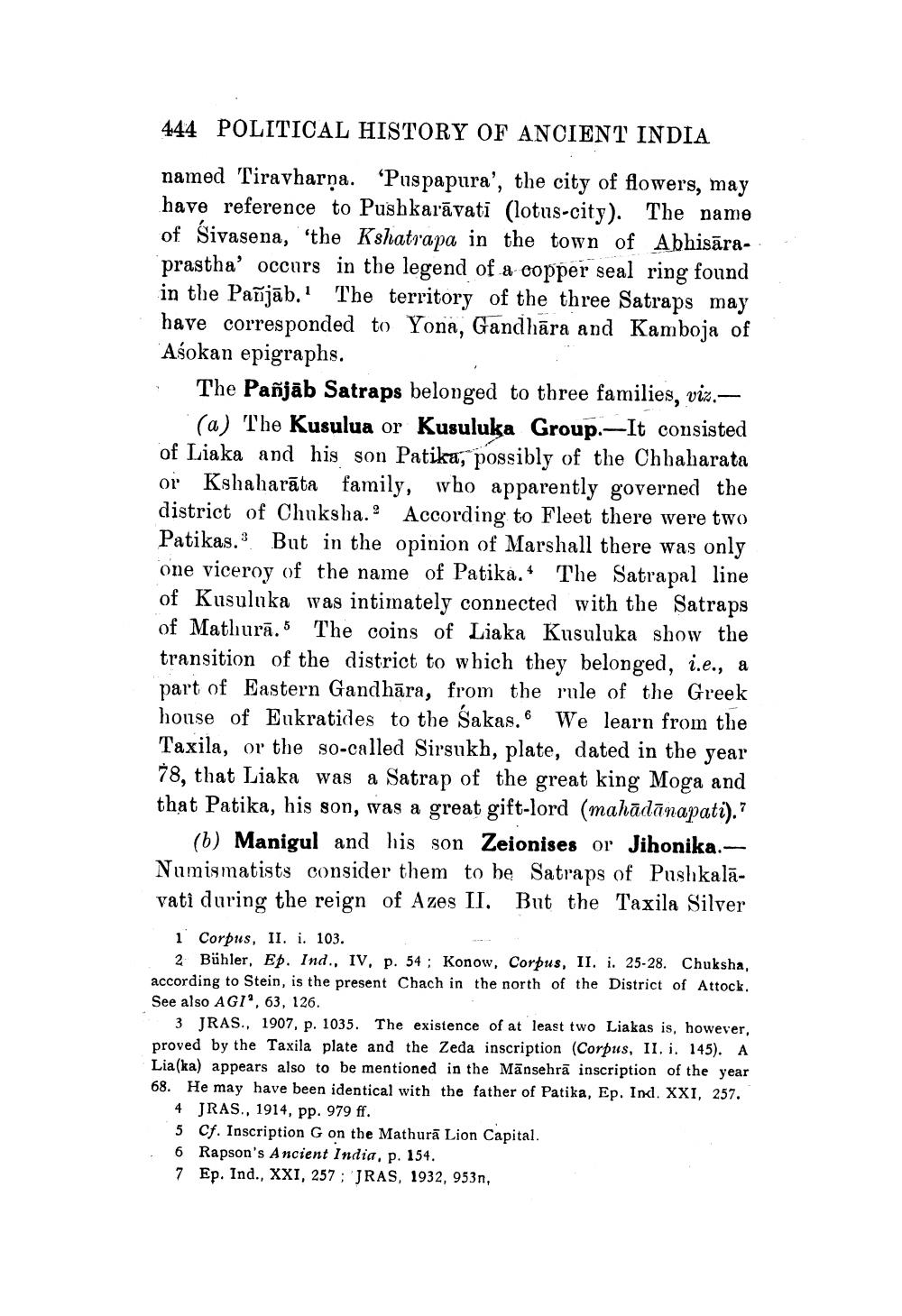________________
444 POLITICAL HISTORY OF ANCIENT INDIA
named Tiravharņa. 'Paspapura', the city of flowers, may have reference to Pushkarāvati (lotus-city). The name of Sivasena, ''the Kshatrapa in the town of Abhisāraprastha' occurs in the legend of a copper seal ring found in the Pañjāb.' The territory of the three Satraps may have corresponded to Yona, Gandhāra and Kamboja of Asokan epigraphs.
The Pañjāb Satraps belonged to three families, viz.
(a) The Kusulua or Kusuluka Group. It consisted of Liaka and his son Patika, possibly of the Chhaharata or Kshaharāta family, who apparently governed the district of Chuksha.? According to Fleet there were two Patikas. But in the opinion of Marshall there was only one viceroy of the name of Patika. The Satrapal line of Kusuluka was intimately connected with the Satraps of Mathurā.5 The coins of Liaka Kusuluka show the transition of the district to which they belonged, i.e., a part of Eastern Gandhāra, from the rule of the Greek house of Eukratides to the Sakas. We learn from the Taxila, or the so-called Sirsukh, plate, dated in the year 18, that Liaka was a Satrap of the great king Moga and that Patika, his son, was a great gift-lord (mahādānapati).?
(b) Manigul and his son Zeionises or Jihonika.Numismatists consider them to be Satraps of Pushikalāvati during the reign of Azes II. But the Taxila Silver
1 Corpus, II. i. 103.
2 Bühler, Ep. Ind., IV, p. 54 : Konow, Corpus, II. i. 25-28. Chuksha, according to Stein, is the present Chach in the north of the District of Attock. See also AGI', 63, 126.
3 JRAS., 1907, p. 1035. The existence of at least two Liakas is, however, proved by the Taxila plate and the Zeda inscription (Corpus, II. i. 145). A Lia(ka) appears also to be mentioned in the Mānsehrā inscription of the year 68. He may have been identical with the father of Patika, Ep. Ind. XXI, 257.
4 JRAS., 1914, pp. 979 ff. 5 Cf. Inscription G on the Mathurā Lion Capital 6 Rapson's Ancient India, p. 154. 7 Ep. Ind., XXI, 257; JRAS, 1932, 953n,




